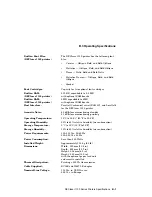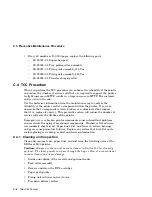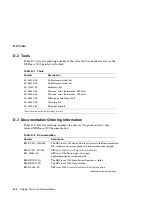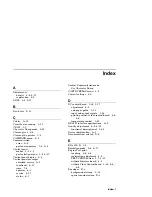
Program cards, 2–17
PS12 and PS13
See also
Jam
FRU location, 9–6
FRU part number, 9–1
location of, 1–14
operation of, 7–5
R
RAM option
functional error message, 6–13
location of, 1–5, 9–4
paint feature, 2–11
part numbers, 9–2
remove and replace, 10–64
total RAM, 4–2
Ready modes
See
Control panel modes
Refilled EP-L cartridges, 8–1, 10–36
Registration adjustment, 8–9
Related documentation, D–2
Removing and replacing FRUs, 10–1
Required training, D–1
Reset, 2–16
Character Dump, 2–15
invoking setup values, 2–7
key location of, 2–3, 3–3
macro number change, 2–10, A–2
tray page size, 2–3, 2–16, 3–3
Rounding cycle, 7–5
RS232 port, 1–5
RSL, 9–1
S
Safety information, xiv
Saving and loading values
SAVE–>NVRAM feature, 2–14
SAVE–>RAM feature, 2–14
Selecting fonts, 3–17
Sensors
fan, 6–6
front door, 6–6
jam, 7–4
Sensors (cont’d)
location of, 1–13
paper pickup or exit, 7–5
tray paper, 6–6, 6–10
Serial connector pin assignments, A–7
Serial number, 1–5
Serial port or connector, 1–5
Service messages, 6–17
Solenoid locations, 1–13
Specification, operating, B–5
Specifications
DEC423 interface, A–9
LocalTalk interface, A–9
SSR, 1–23
Switches
TP1 and TP2,
See
Fixing unit
HV door switch, 1–13, 1–26
LVPSA safety, 1–9, 1–14
T
TCC
MTTR and MTTF, C–1
procedure, C–2
Test print
cleaning test, 4–6
Test Print A, 4–2
Test Print B, 4–4
Test print, Engine Test, 4–8, 5–8
See also
Engine Test print
TP1 and TP2
See
Fixing unit
Training, tools, D–1
Transparencies, B–4
Tray paper path, 1–10
Typographical conventions, xiii
U
User preference character set, A–2
Index–4


































